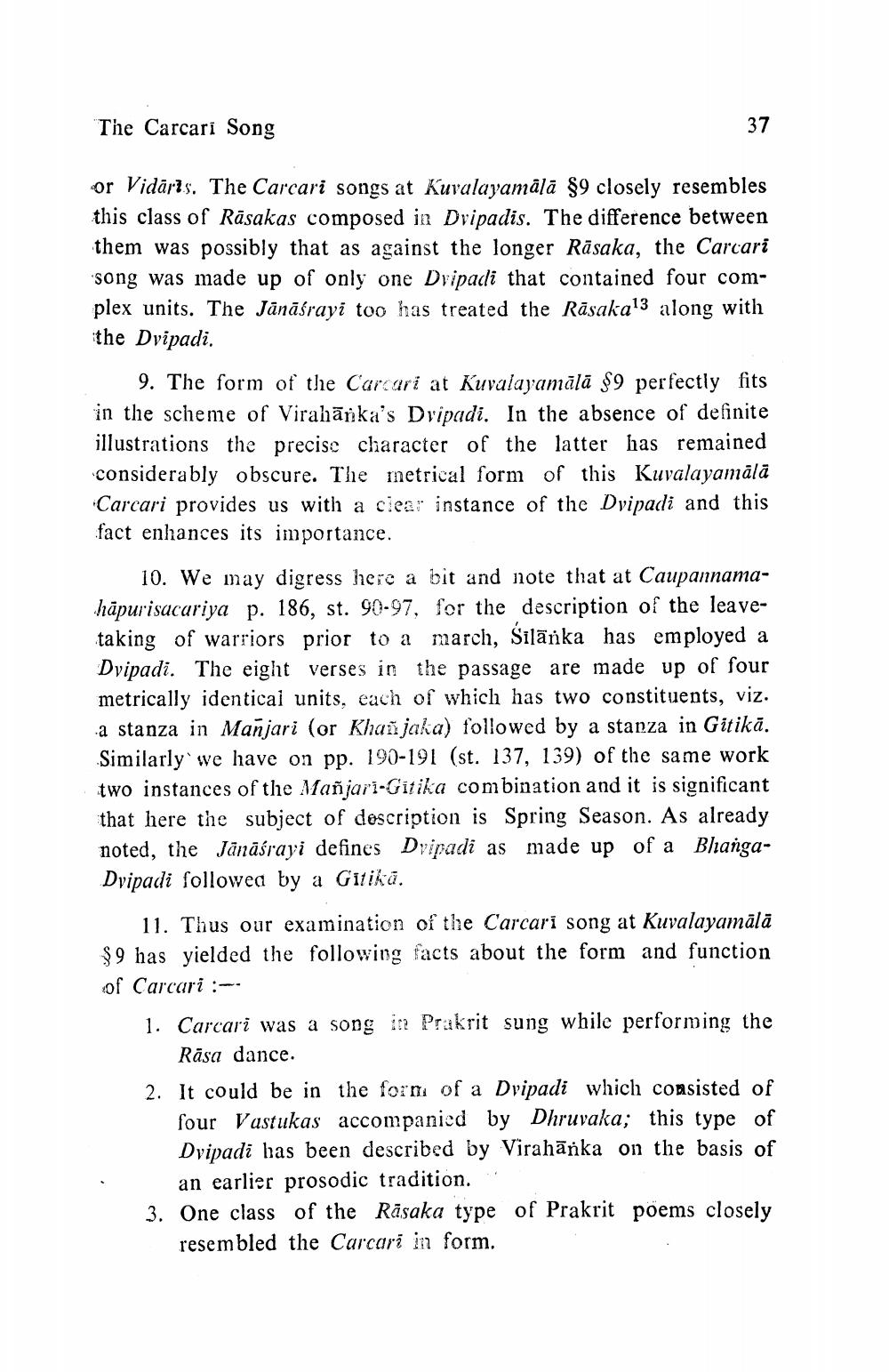________________
The Carcari Song
37
or Vidārts. The Carcari songs at Kuvalayamālā 89 closely resembles this class of Rāsakas composed in Dripadis. The difference between them was possibly that as against the longer Rāsaka, the Carcari song was made up of only one Dripadi that contained four complex units. The Jānāšrayi too has treated the Rāsaka13 along with the Dvipadi.
9. The form of the Carcari at Kuvalayamālā $9 perfectly fits in the scheme of Virahārka's Dvipadi. In the absence of definite illustrations the precise character of the latter has remained considerably obscure. The metrical form of this Kuvalayamāla Carcari provides us with a ciear instance of the Dvipadi and this fact enhances its importance.
10. We may digress here a bit and note that at Caupannamahāpuri sucariya p. 186, st. 90.97, for the description of the leavetaking of warriors prior to a march, Silārka has employed a Dvipadi. The eight verses in the passage are made up of four metrically identical units, each of which has two constituents, viz. a stanza in Manjari (or Khañ jaka) followed by a stanza in Gitikā. Similarly we have on pp. 190-191 (st. 137, 139) of the same work two instances of the Mañjari-Gitika combination and it is significant that here the subject of description is Spring Season. As already noted, the Jānāśrayi defines Dvipadi as made up of a BlangaDvipadi followed by a Gitikā.
11. Thus our examination of the Carcari song at Kuvalayamālā $ 9 has yielded the following facts about the form and function of Carcari :1. Carcari was a song in Prakrit sung while performing the
Rāsa dance. 2. It could be in the form of a Dvipadi which consisted of
four Vastukas accompanied by Dhruvaka; this type of Dvipadi has been described by Virahārka on the basis of
an earlier prosodic tradition. 3. One class of the Rāsaka type of Prakrit poems closely
resembled the Carcari in form.




